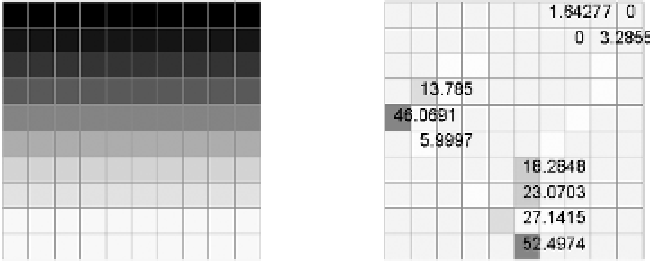Geography Reference
In-Depth Information
FIGURE 8-28 A weight
raster: more rainfall in the
northern part of the raster
FIGURE 8-29 Flow
accumulation taking into
account the weight raster
You can see from this example that hydrologic modeling can be a complex operation with many
variables and parameters.
Calculating the Length of a Potential Linear Water Body
The length of a potential creek or stream is a useful thing to know when modeling. You can apply the
Flow Length calculation to the direction of flow raster to show either the length of the channel of flowing
water from each cell upstream or downstream. Upstream flow length for a given cell is the distance,
totaled from cell to cell, from the given cell to the origin of the longest path of water (the top of its basin)
coming into that cell. Downstream flow length from a given cell is the distance from that cell to the pour
point for the water passing through the given cell. See Figure 8-30, where darker shades indicate larger
flow length.
The upstream flow length looks like Figure 8-31, where darker shades indicate longer flow lengths.
The Input Weight Raster in the Flow Length tool operates in precisely the same way as the weight raster
does (impedance, cost surface) in our previous discussion of proximity. It multiplies the length through
FIGURE 8-30
Downstream
FIGURE 8-31 Upstream
flow length
flow length







Search WWH ::

Custom Search